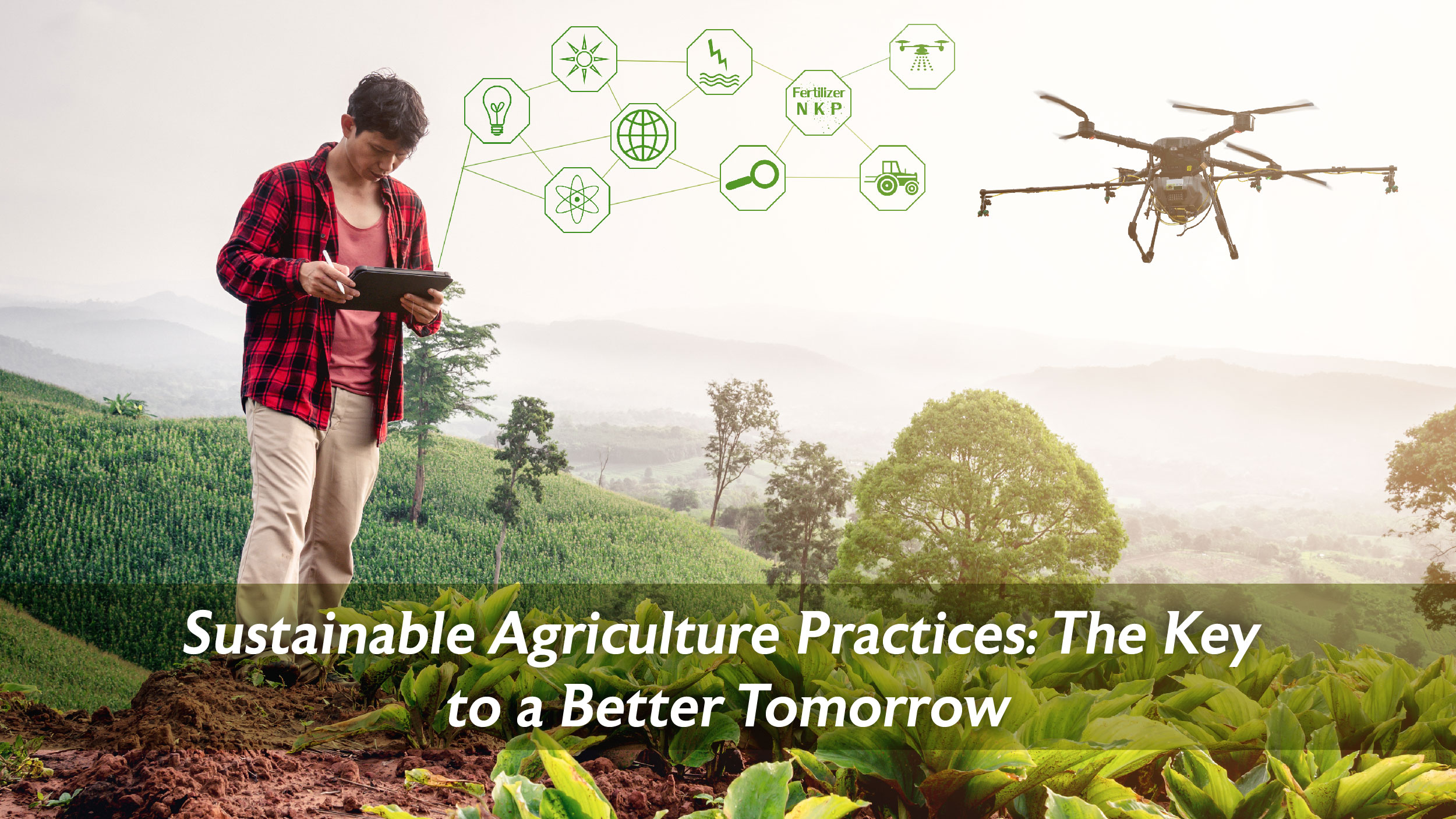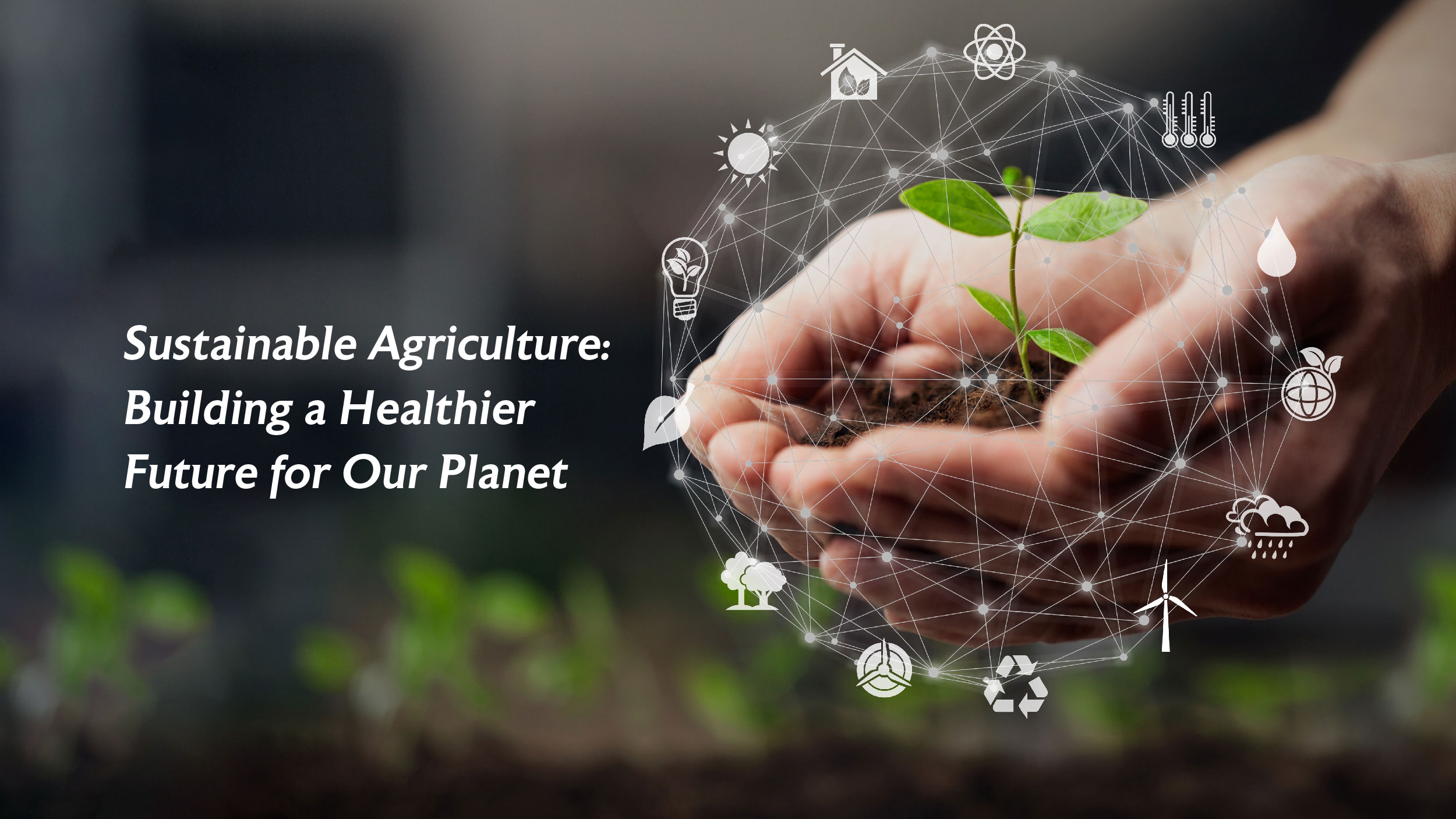The United Nations has some big predictions – by 2050, we might have nearly two billion more people on this planet, potentially taking our total population to a whopping 9.7 billion. With more people comes the need for more resources, and that includes a whopping 70% increase in food production to keep up with the booming population.
Now, think about it: over one billion people rely on farming for their livelihoods. But here’s the kicker – with our planet’s limited natural resources, can we really produce all that food to feed everyone? That’s where sustainable agriculture steps in as the solution to this growing concern.
Let’s talk more about sustainable farming, covering sustainable agriculture definition and practices in this blog.
What is Sustainable Agriculture?
Sustainable agriculture aims to work in harmony with nature, emphasizing the optimization of food production and the reduction of environmental harm. It entails the preservation of the environment, the enhancement of natural resources, and the promotion of the well-being of both animals and humans. By doing so, it ensures the long-term viability of food sources while decreasing dependence on conventional farming methods and promoting alternative food choices.
Sustainable farming methods encompass the utilization of local assets, minimizing water consumption, and employing organic fertilizers to uphold soil health and mitigate erosion, ultimately safeguarding the earth’s resources for the well-being of future generations.
Why is Sustainable Agriculture so Important?
Sustainable farming holds immense significance and should not be underestimated. As our population continues to grow, the demand for food increases as well. In light of the predicted global population boom, farmers will face the daunting task of increasing food production to meet the growing demand. In this context, it becomes crucial for us to adopt environmentally responsible approaches to farming. Sustainable agriculture not only helps conserve natural resources but also fosters social equity and economic profitability.
Sustainable agricultural practices not only minimize the environmental footprint of conventional farming but also lead to increased productivity and healthier offerings for consumers. The primary goal of these methods is to safeguard vital resources, including soil fertility, which plays a crucial role in the success of farming endeavors. Moreover, these innovative systems can prove advantageous in regions where resources are limited or scarce.
Sustainable Agriculture Practices: The Key to a Better Tomorrow

After years of research and hands-on experience, the combination of the following farming techniques has been demonstrated to be successful in promoting sustainability:
● Rotating crops and embracing diversity
Introducing a variety of crops into agricultural practices can offer numerous advantages, such as promoting soil health and enhancing pest management. Methods employed to achieve crop diversity encompass intercropping, which involves cultivating multiple crops within the same area, as well as implementing intricate and multiyear crop rotation systems.
● Planting cover crops and perennials
Cover crops like clover, rye, or hairy vetch are sown during periods when the soil would typically be left exposed, providing protection and maintaining active roots throughout the year. By doing so, these crops play a crucial role in safeguarding the soil from erosion, enriching it with essential nutrients, and effectively managing weed growth. Consequently, the reliance on fertilizers and herbicides is reduced.
● Reducing or eliminating tillage
Traditional plowing, also known as tillage, is a common practice used to prepare fields for planting and address weed issues. However, this method can lead to soil erosion. An alternative approach is the use of no-till or reduced-till methods, where seeds are directly inserted into the undisturbed soil. These methods not only minimize erosion but also promote better soil health.
● Applying integrated pest management (IPM)
Various approaches, such as employing mechanical and biological measures, can be systematically utilized to manage pest populations, reducing reliance on chemical pesticides.
● Integrating livestock and crops
In the realm of agriculture, it is common practice for plant and animal production to be segregated. Animals are housed far away from where their feed is grown, while crops are cultivated at a distance from the readily available sources of manure fertilizers. However, a wealth of evidence suggests that integrating crop & animal production smartly can lead to increased profitability and efficiency on farms.
● Adopting agroforestry practices
By incorporating shrubs or trees into their sustainable agriculture practices, agriculturalists have the opportunity to offer protection and refuge for plants, animals, and water sources. Furthermore, they may potentially generate extra revenue through the cultivation of fruit or nut-bearing crops.
Sustainable Agriculture: Building a Healthier Future for Our Planet

Sustainable agriculture plays a crucial role in creating a healthier future. It offers a wide range of benefits to the environment, economy, and society as a whole. Through the adoption of sustainable farming methods like conservation tillage, crop rotation, and diversification of food choices, we have the potential to enhance food security, preserve our natural resources, address the challenges posed by climate change, and ensure the well-being of future generations.
Sustainable farming serves as a cornerstone in our efforts to preserve the remaining resources and safeguard our planet. It’s a vital step forward. While it may appear daunting to establish sustainable agriculture practices on a global scale, each small effort made brings us closer to achieving this commendable objective. It can help us create a better world free from food insecurity.




